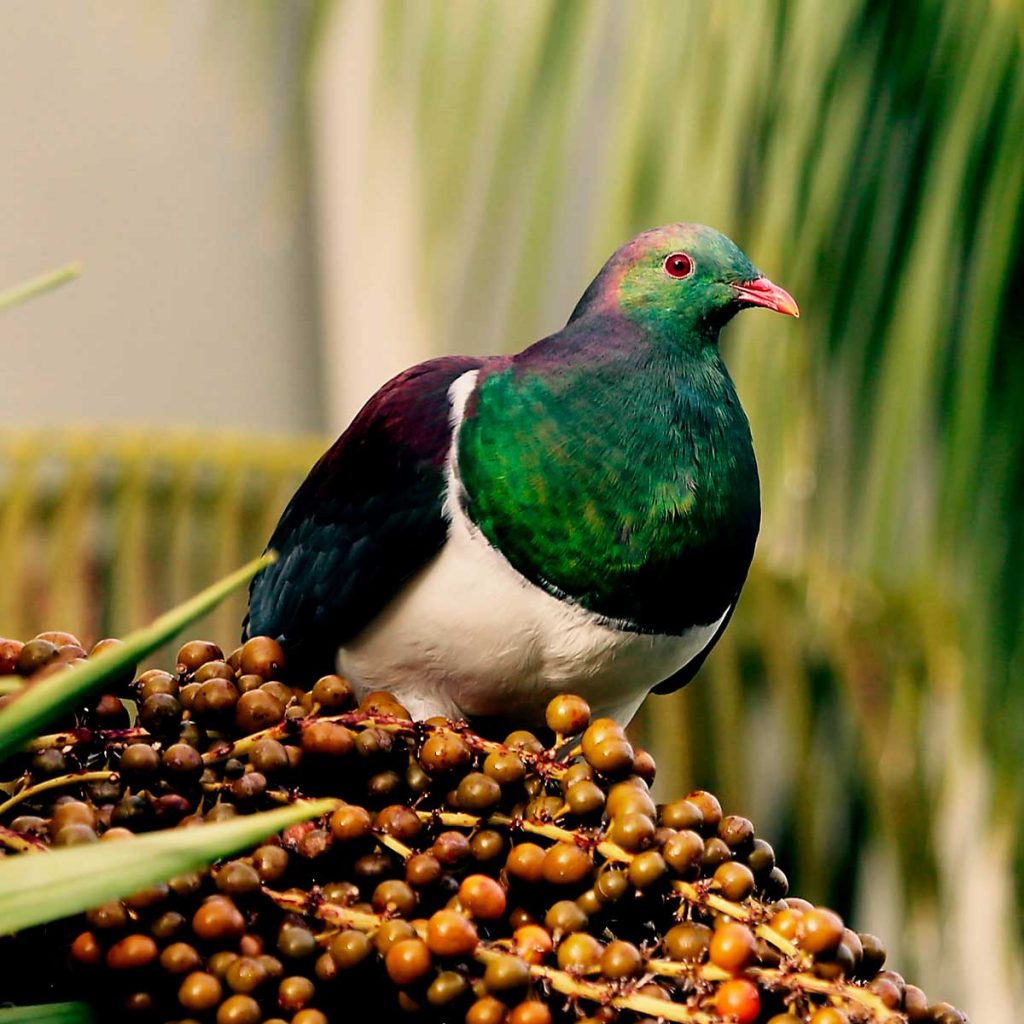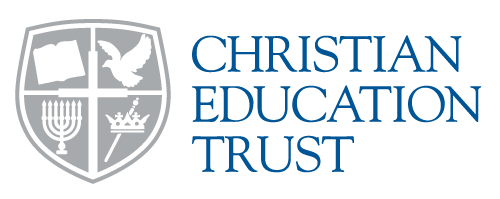
Birds / Kereru
Information for Juniors
Kereru
(Wood Pigeon)
- Maori name – Kereru
- Large fruit eating pigeon, multi-coloured feathers
- Shiny green, purple and bronze with a white/grey breast
- Feet and eyes are red
- It feeds on fruits and berries
- A healthy Kereru lays one egg per brood maximum of 2 broods per year
- Its nest is flimsy
- The eggs take a month to incubate
- Baby chicks take 40 days inside the nest before flight
- Its song is a cooing sound and its wings make a distinctive sound as it flies
What does it sound like?


Information for Junior Secondary
Kereru
(Wood Pigeon)
- Maori name – Kereru
- Located in native forests all over NZ
- The distinctive sound of it wings when in flight identifies the Kereru
- Its song is a cooing sound which is rarely heard unless when mating or in trouble
- Large fruit eating pigeon, multi-coloured iridescent feathers.
- Shiny green, purple and bronze with a white/grey breast
- Feet and eyes are red
- It feeds on fruits and berries and new shoots and leaves, particularly the Kowhai
- A healthy Kereru lays one egg per brood maximum of 2 broods per year
- Its nest is flimsy and therefore vulnerable to the attack from pests like rats, stoats, opossums and cats
- The eggs take a month to incubate
- Baby chicks take 40 days inside the nest before flight
- Its vulnerable to pests
What does it sound like?


Information for Senior Secondary
Kereru
(Wood Pigeon)
- Maori name – Kereru
- Order is Columbiforms, family Columbidea
- Located in native forests all over NZ
- Inconspicuous most of the year except in the breeding season
- The distinctive sound of it wings when in flight identifies the Kereru
- Its song is a cooing sound which is rarely heard unless when mating or in trouble
- Large fruit eating pigeon, multi-coloured iridescent feathers
- Shiny green, purple and bronze with a white/grey breast
- Feet and eyes are red
- It feeds on fruits and berries and new shoots and leaves, particularly the Kowhai. It spends time on the ground feeding on clover and herbs
- A healthy Kereru lays one egg per brood maximum of 2 broods per year
- Most eggs are laid in September through to Easter
- The male shares the nesting responsibilities with the female which takes up to 10 days
- Its nest is flimsy and therefore vulnerable to the attack from pests like rats, stoats, opossums and cats
- The eggs take a month to incubate.
- Baby chicks take 40 days inside the nest before flight
- Its vulnerable to pests
What does it sound like?


NZ Kereru Activities
- How many different colours can you see?
- When does the Kereru coo?
- What is the Kereru’s favourite food and where is it found?
- What is the English name for the Kereru?
- Draw and colour the bird accentuating the white breast.
- Find out how the Kereru protect its young
- Is the Kereru population growing?
- What can we do to bring more Kereru to the park
